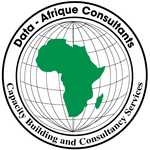|
|
Training Course On ICT For Disaster Response
USD 2,950 |
Venue: Nairobi
This five (5) days training course explores how new information-, communication- and mapping technologies can be practically used to respond to disasters, augment situational awareness, improve relief coordination and much more. The digital revolution is changing disaster response. From the earthquake in Haiti to Typhoon Haiyan in the Philippines, the Ebola outbreak in West Africa and the recent earthquake in Nepal, a range of new tools can help national and international organizations respond faster and more effectively. This course covers the use of ICT in disaster response using real case studies for better clarity.
COURSE OBJECTIVES
After the course, participants will be able to:
- Assess the opportunities and challenges in the use of technology to respond to disasters
- Integrating humanitarian approaches and development with technological strategies
- Learn to manage and operate software platforms and technological tools in disaster response
- Develop strategies to solve challenges during disasters using technological platforms
- Develop self awareness and confidence in the use of maps, mobile technologies and social media
DURATION
5 days.
WHO SHOULD ATTEND
This course is beneficial too professional working in the management of disasters including decision makers, developing and planning officials, professionals in the housing, public works, , governmental officials, and NGOs committed to disaster management. The course accommodates participants from all nations.
COURSE OUTLINE
The course will be delivered through three modules:
Module I: Introduction & Social Media for Crisis Response
- The Power of the Crowd: Digitizing the Response
- Information Overload: Verification, Analysis, and Decision Making in Real-Time
- How Case studies on the use of Social Media in Response to the Earthquake in Haiti, Nepal and Typhoon Haiyan in the Philippines
- Tools: Twitter, Facebook, Instagram, Tomnod, AIDR
- Tools collaborative Mapping in a crisis
Module II: Mapping the Crisis - New Techniques for Disaster Response and Preparedness
- Distinguishing between Ushahidi and Open Street Map
- Maps for disaster response
- Damage mapping with Open Street Map (with examples from the Haiti, West Africa, Philippines and - hopefully - Nepal)
- Online Mapping without a Mobile Internet Connection
- Crowdsourcing Remote Mapping and Image Identification
- Tools: OpenStreetMap, Ushahidi, TomNod, FieldPapers
- ICT tools for tracing and restoring family links
Module III: Mobile Response: How Mobile Technology is Changing Disaster Response
- Field data collection using Mobile Devices
- SMS Campaigns for Early Warning and Crisis Prevention
- Smartphones and Apps for Disaster Response
- Using Secondary Data to Track Population Movements
- Tools: ODK, Kobo Toolkit, TextIt, Magpi, FrontlineSMS
Module IV: Looking Ahead: Where New Technologies are Taking Us
- Roles of Drones play in Humanitarian Emergencies
- Utilization of the Web for De-Centralized Disaster Response
- The Responsibility to Protect Data - How NGOs can Protect Sensitive Information
GENERAL NOTES
- This course is delivered by our seasoned trainers who have vast experience as expert professionals in the respective fields of practice. The course is taught through a mix of practical activities, theory, group works and case studies.
- Training manuals and additional reference materials are provided to the participants.
- Upon successful completion of this course, participants will be issued with a certificate.
| Nairobi | Dec 09 - 13 Dec, 2024 |
Class Session: 08:00:am - 04:00:am
| USD 2,950.00 | (Kigali) |
| USD 4,500.00 | (Dubai) |
| USD 1,500.00 | (Nairobi) |
| USD 1,500.00 | (Mombasa) |
DUNCAN KARIUKI +254723360025
Tags: |
ICT For Disaster Response decision makers developing and planning officials professionals in the housing public works governmental officials and NGOs |



